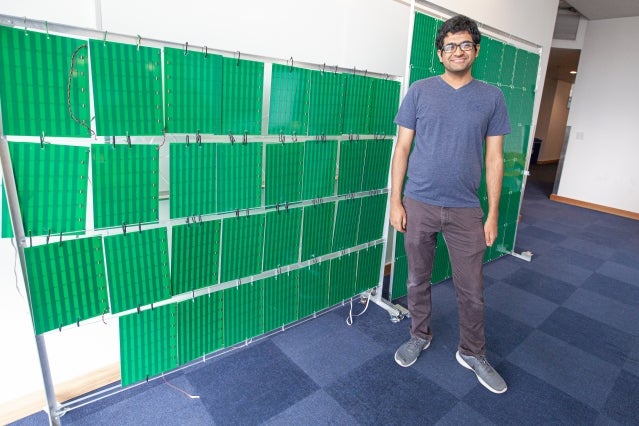MIT teases new tech that’ll make 5G phones “1000%” better

Researchers at MIT have designed a software-controlled smart surface that promises to boost phone signal strength by up to 1000%.
RFocus is a software-powered smart surface created by researchers at the MIT Computer Science and Artificial Intelligence Laboratory (CSAIL).
It is a system that involves attaching more than 3000 tiny antennas to the two-dimensional external surface, allowing signal to either pass through or be reflected from the smart surface itself.
The state of the elements is controlled by MIT-developed software to improve signal strength at the phone or laptop.
Related: Best phone
Manufacturers usually beef up device signal strength by adding more antennas to either Wi-Fi access points and cell towers or the phone or laptop itself. However, the smaller devices get, the more difficult this is to achieve.
RFocus could present an affordable solution to this issue. Each antenna costs just a handful of cents because the tech doesn’t process the signal, but controls how it is reflected.
Project lead author Venkat Arun believes that this system could represent the largest number of antennas ever used for one single communication link.
Related: Best laptop
The CSAIL researchers believe the system could be put to use in network-connected homes and factories in future years as smart surface antennas would be an affordable, non-power intensive way to keep an eye on machines and inventory in warehouses.
RFocus has certainly cropped up at the right time. Manufacturers need to invent more efficient methods to deliver wireless signals that can keep up with speedy 5G internet and encourage more consumers to adopt the tech.
“The core goal here was to explore whether we can use elements in the environment and arrange them to direct the signal in a way that we can actually control”, said MIT Professor and senior author on a paper about RFocus Hari Balakrishnan.
“If you want to have wireless devices that transmit at the lowest possible power, but give you a good signal, this seems to be one extremely promising way to do it”.
CSAIL hasn’t given any indication that RFocus will be used in consumer devices anytime soon. However, MIT has licensed its tech to manufacturers in the past so there is a chance we could see these antenna-filled smart screens hit the market at some point in the future.


